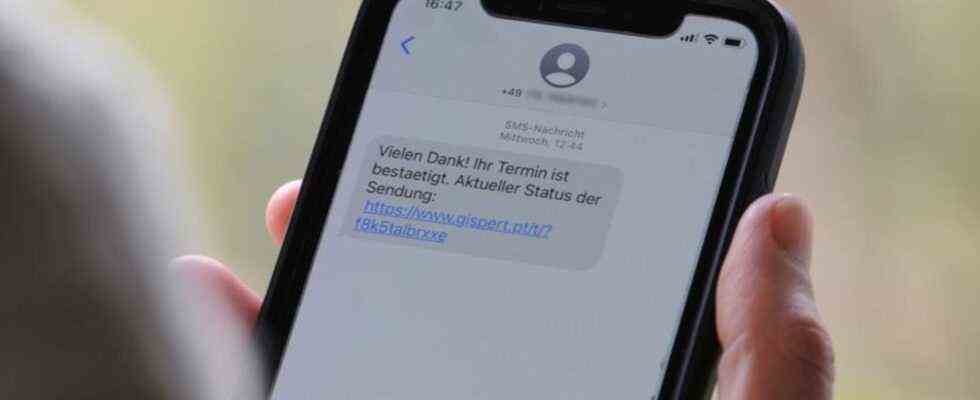consumer
Sharp increase in number abuse complaints
A woman with a smartphone that reads a scam SMS. Photo: Wolf von Dewitz / dpa
© dpa-infocom GmbH
Telephone spam and other illegal contacts: the Federal Network Agency had received more than 135,000 complaints by the end of November – an increase of 61 percent.
Significantly more citizens vented their anger over telephone spam and other illegal contacts this year.
The Federal Network Agency had received 138,480 complaints about phone number misuse by the end of November, as the Bonn authority announced. That was an increase of 61 percent – in the same period last year it was 84,340. Often it was about fax advertising for corona rapid tests or masks. In addition, many citizens received SMS with a link via which criminals wanted to pull data or trigger a bulk SMS transmission. This is called “smishing”, a mixture of SMS and phishing.
In the case of phone calls that are considered to be number misuse, the criminals often rely on technical manipulation: the wrong phone number appears on the display of the person called. If the called party has overcome their confusion after the phone call and calls back, they end up in nowhere.
Number misuse has long been a problem. According to the figures, the anger about this is particularly great this year, but it has been higher in the past. Although the month of December is still missing from this year’s statistics, the number of 164 351 complaints in the whole of 2016 should not be exceeded. In 2016, phone number misuse was characterized by so-called ping calls: the cell phone only rings briefly, you call back and then you don’t have to pay for an international connection, not knowing anything. However, the ping problem has become less acute because calls to certain countries require a price announcement before the bell rings. This year there were around 5,000 ping complaints.

